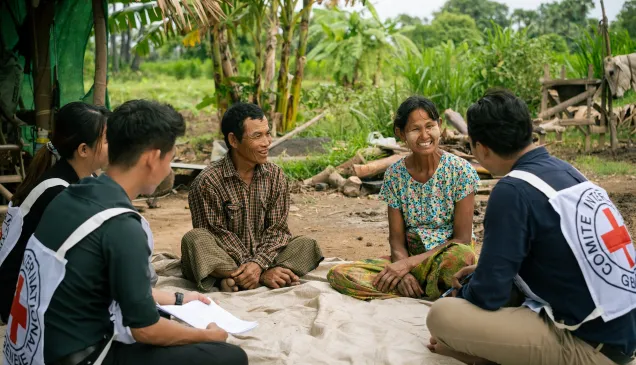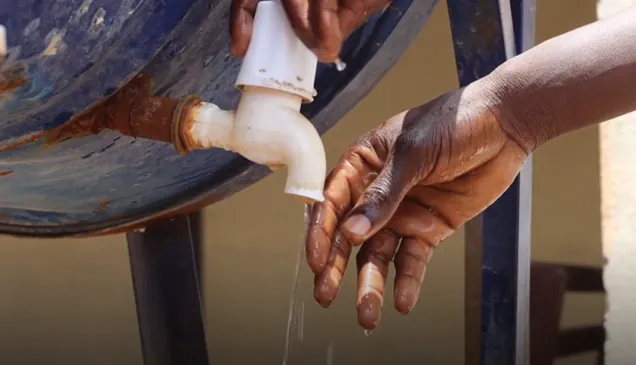Afghanistan: ICRC team reaches remote communities affected by earthquake in Kunar
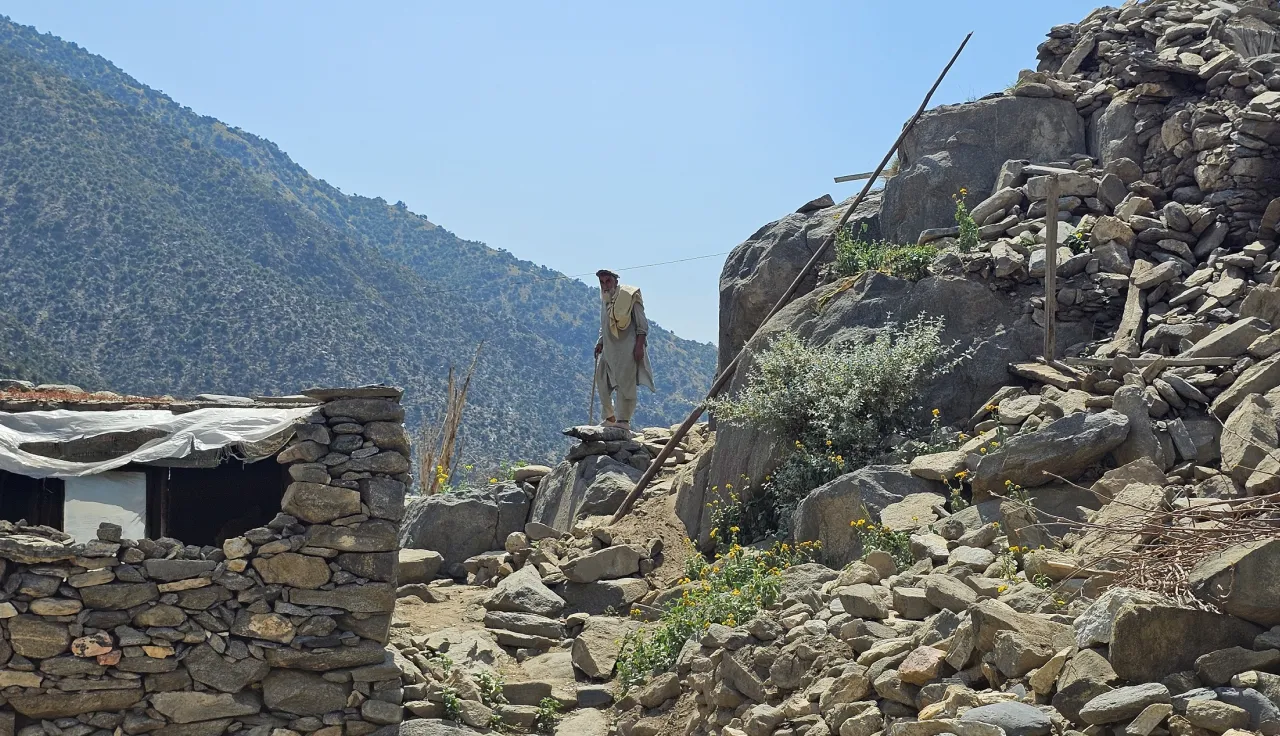
Not a single house remains standing in Masoud village of Nurgal district following the devastating earthquake in Afghanistan’s remote Kunar region that claimed more than 2,200 lives last month. Of the 1,000 inhabitants, some 60 lost their lives and about 130 suffered injuries when their homes – made of stone, clay or mud – crumbled as the earth shook on the night of 31 August.
An ICRC team managed to reach the village days after the earthquake and witnessed the scale of the destruction. Communities continue to live in makeshift camps under very difficult conditions, lacking essentials such as food, water and basic health care. Many are traumatized and fear going back to their ruined homes because of the danger that aftershocks will cause buildings to collapse further.

Destruction of the earthquake in Mazar Dara, Nurgal district, Kunar province.
"There is nothing left now”
Dawood Shah lost nine members of his family in the quake, including his wife, children, mother and brother. “People don’t have houses anymore. They don’t have food,” he said. “Everything that was there is now under the rubble. There is nothing left now.”
First-responders recounted how getting help to those buried and injured by the quake was made harder by landslides damaging the region’s already limited road network.
“We had to walk for three hours and when we reached the affected area the scene looked like Judgement Day,” said Assadullah, a resident of Dara Noor district. In some cases, helicopters became the only way to ferry people in need of urgent care to hospitals, he said. “The clinic is far from our area, it takes about one hour to reach it.”
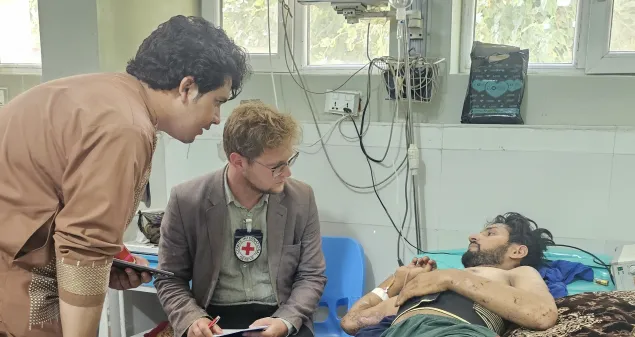
The ICRC team visits Dawood Shah in Nangarhar Provincial Hospital. Dawood Shah’s back was broken in an earthquake in Mazar Dara of Kunar province.
Fawad Ahmad, 22, was taking his sheep to pasture in the mountains when the earthquake struck Kamdish district in Nuristan province at around 12:00 AM. Fawad was trapped under a large rock until morning, when a neighbor discovered what had happened and informed his father. His father, Amir Ahmad, and other villagers rushed into the mountains and managed to pull Fawad out in critical condition. After twelve hours, his father brought him to Nangarhar Regional Hospital.
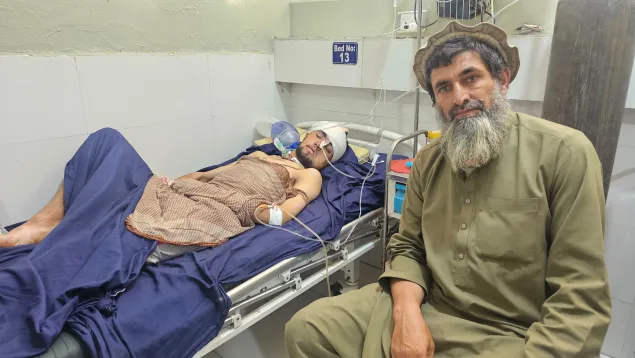
Amir Ahmad sits beside his son Fawad, 22, in hospital after a neighbour discovered him trapped under a large rock hours after the earthquake. He had been taking his sheep to pasture in the mountains when the earthquake struck.
Mohammad Rahim brought his injured son from Alingar district of Laghman province to Nangarhar regional hospital for treatment. He says it was around 12:00 at night when the earthquake struck. "We all ran out of the house and ran away. The house and the walls collapsed. My son was running when a piece of the wall hit his head, and he was seriously injured."
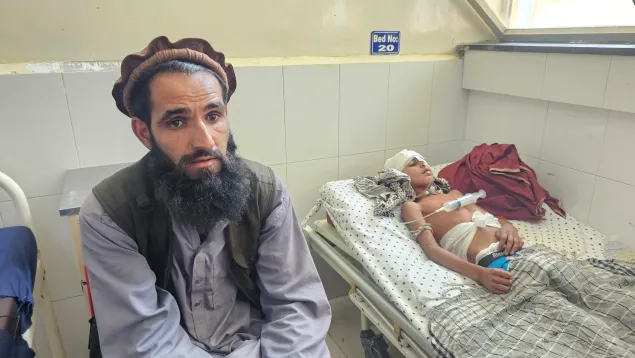
Mohammad Rahim sits beside his seriously injured son, who was hit on the head by a piece of the wall of his home while running to escape the building during the earthquake.
ICRC response
The ICRC’s response included bringing donated medical supplies such as dressing packages and oral and intravenous kits, crutches and wheelchairs to regional hospitals in Nangarhar and Kunar that have received an influx of hundreds of injured patients. It is also providing vehicles to the Kabul ambulance department that is part of the emergency response, as well as equipment and supplies to the Afghan Red Crescent Society (ARCS) Eastern region branch. One of the ARCS’s mobile teams provides basic health services to remote areas in Nurgal district once a week.
“So far we have helped around 1,100 injured people from the earthquake alone,” said Fahimullah, head of Nangarhar hospital. Some patients require long-term care due to arm, leg or spinal fractures, he added. “They will stay in neurosurgery, orthopaedic and general surgery wards to receive treatment.”
The ICRC’s physical rehabilitation center in Jalalabad branched out to the main hospitals in Nangahar and Kunar with male and female teams to provide physical therapy for survivors of the earthquake. This is an essential service that is often not prioritized as part of medical treatment in Afghanistan and can help prevent long-term complications for major trauma and spinal cord injuries.
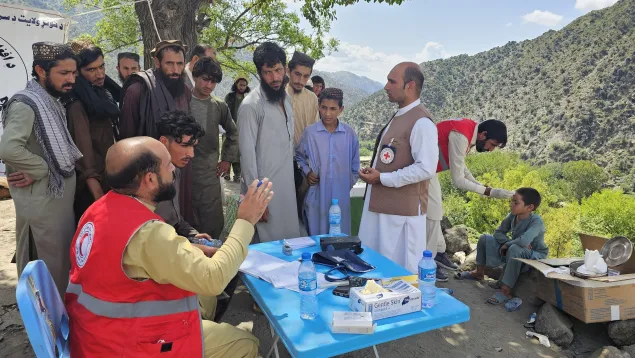
The ICRC team is visiting the Afghan Red Crescent Society’s (ARCS) mobile health clinic in the Mazar Dara of Nurgal District, Kunar Province, where a devastating earthquake struck, killing and injuring thousands. The mobile clinic provides essential healthcare services to the wounded in this remote and mountainous area, where access to permanent medical facilities is extremely limited.
In addition to the loss of life, many people face severe economic hardship ahead. Most people in Masoud depended on livestock for their livelihood, which is now at risk because so many of their cows and goats were killed in the disaster. Water pipes and canals have also been destroyed by the quake, while supplies of food and shelter material are limited. Like in other villages, women and children could be seen begging by the side of the road.
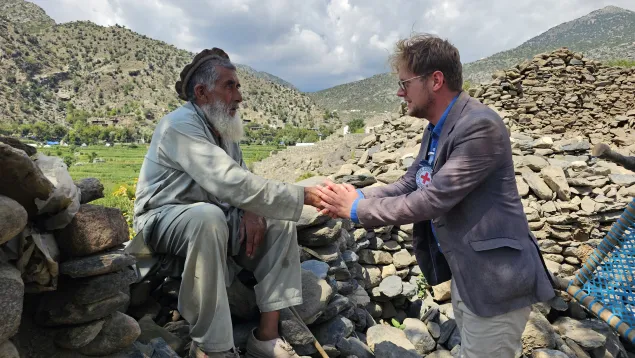
ICRC staff met Mia Askar, who lost everything in the earthquake.

The ICRC’s team visiting affected communities in Chawkay district of Kunar province. The ICRC continues to help the ARCS to support communities affected by the Kunar earthquake. 494 tents have been installed and an additional 500 tents will be set up soon.
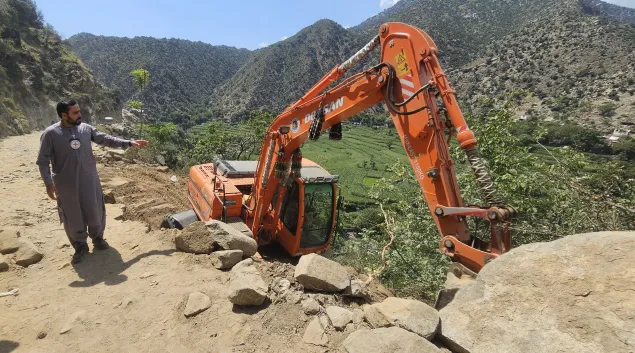
The ICRC team has rented machinery to clear the roads, which have been blocked by the earthquake, to reach affected communities.
“These communities here that have suffered so much need humanitarian support,” said Achille Després, a member of the ICRC team that visited Nurgal district in Kunar region, noting that the earthquake follows decades of armed conflict and the impacts of climate change already affecting people in eastern Afghanistan.


